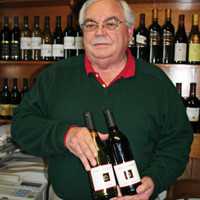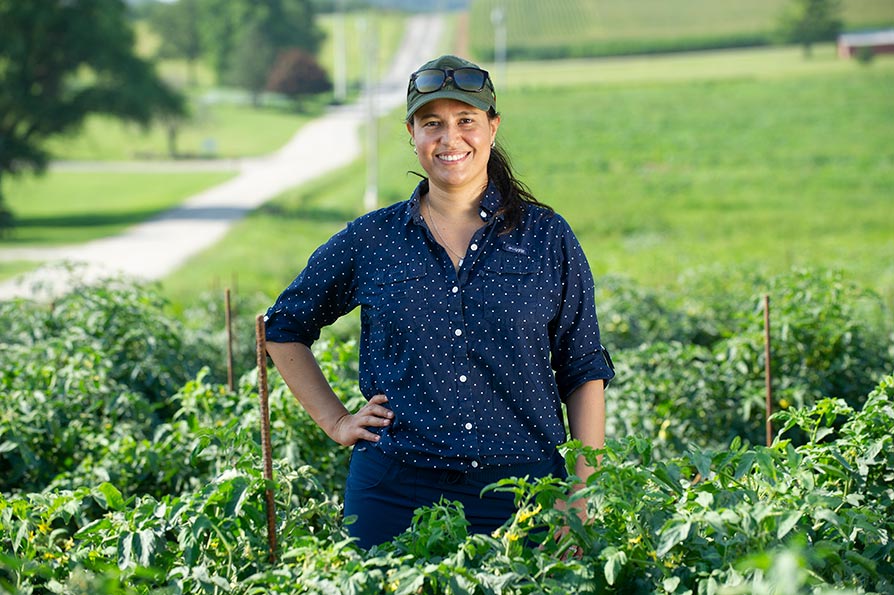Major Winegrower Calls For Higher Market Share

Fred Franzia is a true iconoclast. He has no respect — none at all — for the widely held concept that the North Coast of California, commonly known in the popular press as “wine country” is, in fact, wine country.
“They don’t produce the grapes,” he says of his counterparts in Napa and Sonoma counties. “We do.”
Franzia, the largest individual grower in the state, farming “in excess of 50 square miles” in seven counties in the San Joaquin Valley, has a point. California may produce 90% of the nation’s winegrapes, but Franzia and his San Joaquin Valley colleagues produce 70% of those grapes. “Our audience — our growers — are the San Joaquin Valley. The valley is what will provide the world efficiently and profitably,” he says. “If people want to grow grapes in Napa and Sonoma, that’s their choice, but it’s not nearly as efficient.”
To increase efficiency, everything about his home winery in Ceres — he has five — is huge and impressive. Except the offices. “Offices don’t make money,” he says. It’s all about economies of scale for Franzia. He has one tank press, for example, that he says is the world’s largest, capable of handling five truckloads of grapes at a time. During the season, Franzia has 400 trucks a day loaded with grapes, seven days a week, rolling in.
His winery is massive, but you’d never notice unless you got up close. But huge is an understatement. Most visitors to his winery are stunned at the size of it, he says. They’re also stunned at how perfectly clean everything is. “It should be — we’re in the food business,” he says. “Real wineries aren’t romantic to look at.”
Franzia is not your typical grower. He’s a grower only because it’s the most efficient way to make wine. “I’m in the vineyard business because I can grow grapes more cheaply than I can buy them,” he says. “The guy who owns the dirt already, he’s got the advantage.”
Finally, He Speaks
Despite being obviously opinionated, Franzia has not spoken to grower groups in recent years. Karen Ross, who spent 13 years as president of the California Association of Winegrape Growers (CAWG), tried to get Franzia to speak at CAWG’s annual meeting numerous times. But Franzia was so insistent in declining, Ross, who was recently named a senior adviser at USDA, finally gave up.
Asked why he wouldn’t speak to CAWG, Franzia said he wasn’t interested in talking to growers outside the San Joaquin Valley. That’s why, in late November, Franzia agreed to speak at a forum held in conjunction with the first annual meeting of the San Joaquin Valley Winegrowers. That’s his audience, as Franzia makes clear, though he believes all wine from California should be marketed as just that — from California. In his wide-ranging speech, Franzia noted that a third of the U.S. market buys foreign wines, and he outlined a number of programs for California growers to increase their market share. Here’s a taste.
• Research — “There’s no doubt that California is the backbone of the American wine business and will continue to be the number-one quality supplier of varietal wines,” Franzia said. “But an investment now in research and education can help us regain market share.”
He urged his fellow growers to support such groups as the American Vineyard Foundation — he donates more than any grower to the AVF — and the programs at Fresno State University and the University of California (UC) -Davis. Bronco has committed $500,000 for a viticulture chair at UC-Davis, specifically to serve valley growers, and $1 million to Fresno State.
• Water — Franzia says he foresees a future in which water use may be tightly regulated, and growers need to be proactive. That means investing in research for new rootstocks that need less water, new varieties that thrive in the valley heat, and monitoring irrigation systems for maximum efficiency.
In particular, he said growers need an easy-to-use vine-based water monitoring system. “Soil monitoring is great,” he says, “but it’s like relying on the thermostat in your office rather than checking your body temperature to determine if you’re ill.”
• Efficiency — Besides becoming more water-wise, for the good of the industry, growers need to become more efficient in other ways, too, such as studying vine fertility and how it decreases the need for pesticides.
He also believes that most of the harvesting should be done by the wineries, not by growers who only use the equipment for a short time each year. As many acres as he farms, he doesn’t even own the trucks that haul his grapes to the wineries. “Your capital expenditures are going to kill you,” he said.
• Immigration — This is clearly a pet peeve for Franzia, whose grandfather Giuseppe arrived from Italy in 1893 — his Ellis Island certificate hangs on the wall of the Bronco offices. “Is there any grape farmer in this room that will say that he can operate his vineyard today without Latino labor? Without Latinos, there would not be a California grape and wine industry,” he told the assembled growers, urging them to support the California Farm Labor Contractor Association.
“The question isn’t whether illegal immigration is a problem, but how to solve it,” Franzia concluded, saying he was sick of the “excessive bashing and stereotyping” of Latino immigrants. “On the whole, Latino immigrants are an asset, not a liability.”









